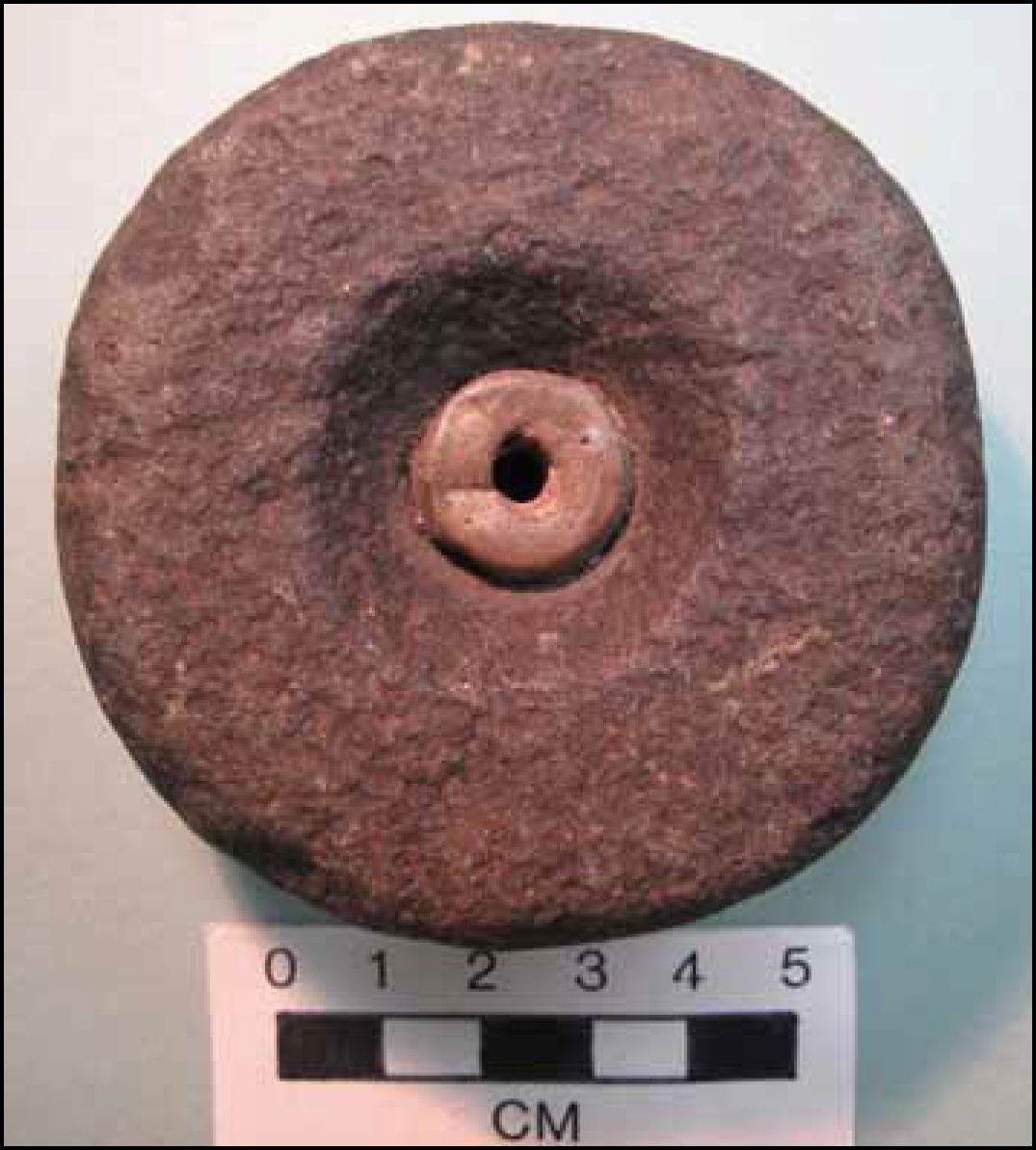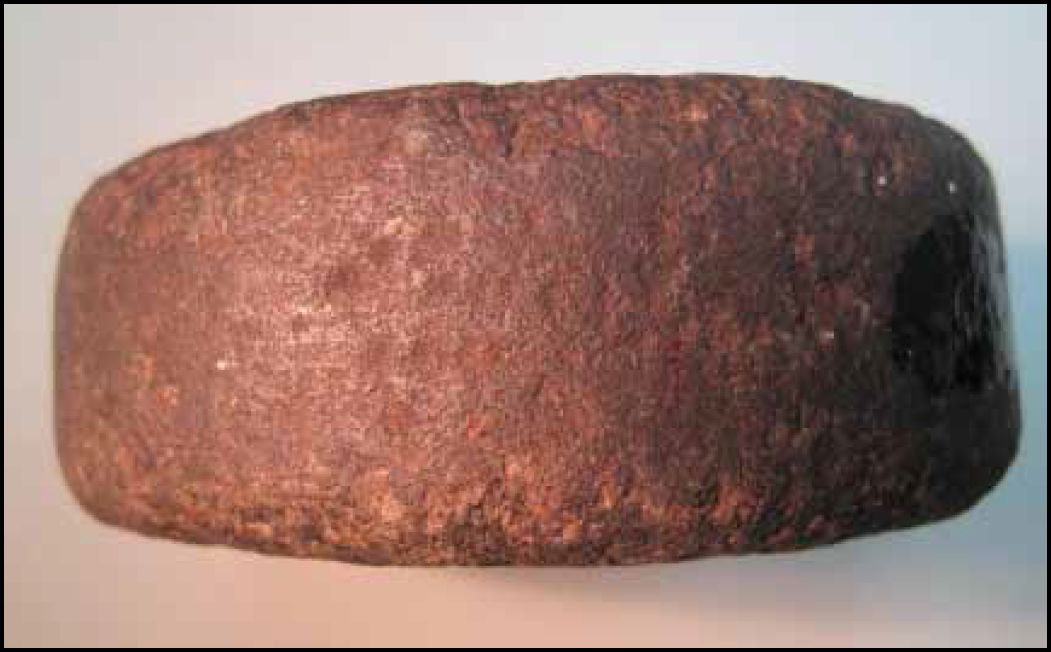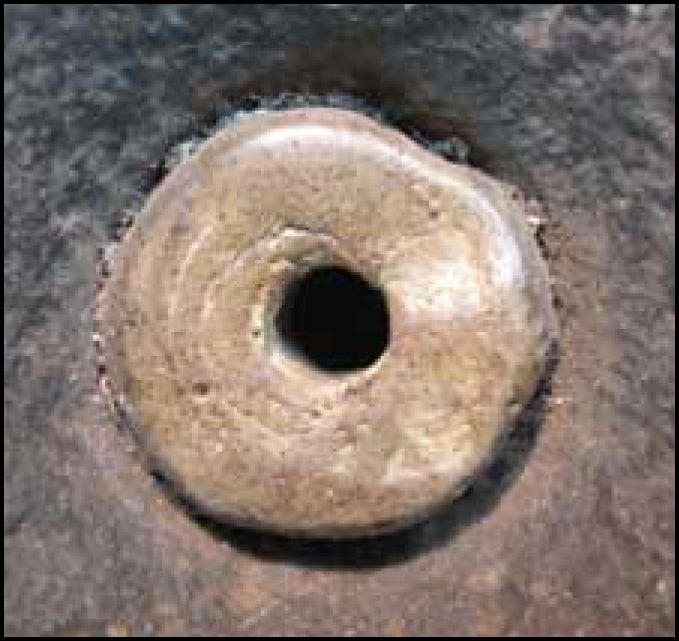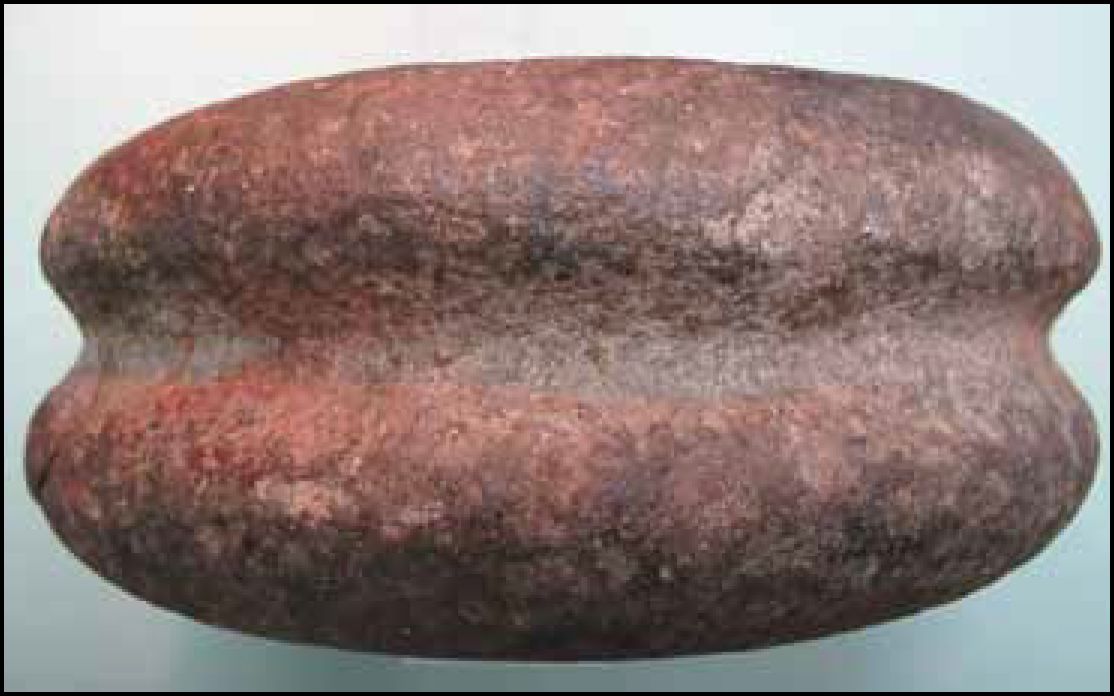Originally published in The Midden, 43(4), 8-9.
2011.
By Grant Keddie
There are a large variety of stone objects in museums often referred to as “Donut Stones” or “Gaming Stones.” Two examples in the Royal B.C. Museum collection are unique and worthy of a detailed description.

Artifact DkSf-Y:40
This artifact (Figure 1) was found in 1897 in a “shell-mound” in Comox by Walter B. Anderson, the son of Alexander C. Anderson of the Hudson’s Bay Company.
This round, flat-sided, diorite-like stone (77mm by 28mm) has grinding around its edge consistent with the kind of wear patterns produced on a rotated grit stone wheel (Figure 2). The artifact weights 305 grams, and is like other similar shaped stones with a bipolar-pecked central hole. However, it is unique in having a large quartzite bead (17mm by 4.5mm) tightly wedged into this central hole (Figure 3).


The edge grinding does not appear to be part of the manufacturing process—being made subsequently. As there is no grinding on the inside of the 4.8mm diameter bead hole, the artifact would need to have been fixed on an axle that was turned like a crank shaft if it was used as a grinding stone.

Artifact DeRv-Y:8
This artifact (Figure 4) was donated in 1890, by William Lomas, the Indian Agent at Quamichan, near Duncan, on Vancouver Island. It is described in the catalogue as:
“A large specimen with a grooved edge like a pulley-block. Found hanging on a tree at Quamichan lake, and probably used in former times to haul up bird nets.”
This 182mm diameter granite-like stone is heavy, weighing 3.65 kilograms. It does look like a copy of a wooden or metal pulley-block. The inner part of the 17mm diameter hole shows use polishing as if it was turned around on an axle or had something pulled through it. The pecked surface at the bottom of the 8mm deep groove encircling the stone shows less patina and smoothing than the rest of the artifact (Figure 5). This may suggest that it was protected by something like a rope during its use?

The larger circular outer rim varies from 54mm to 67mm in depth, but extending out 6mm more in depth, is a raised inner rim of a 91mm wide circle around the hole.
Since this artifact may still have been in use in the 19th century, we can speculate that it may actually be a stone copy of a European-style pulley, but we cannot rule out that it is part of an earlier pre-contact technology.